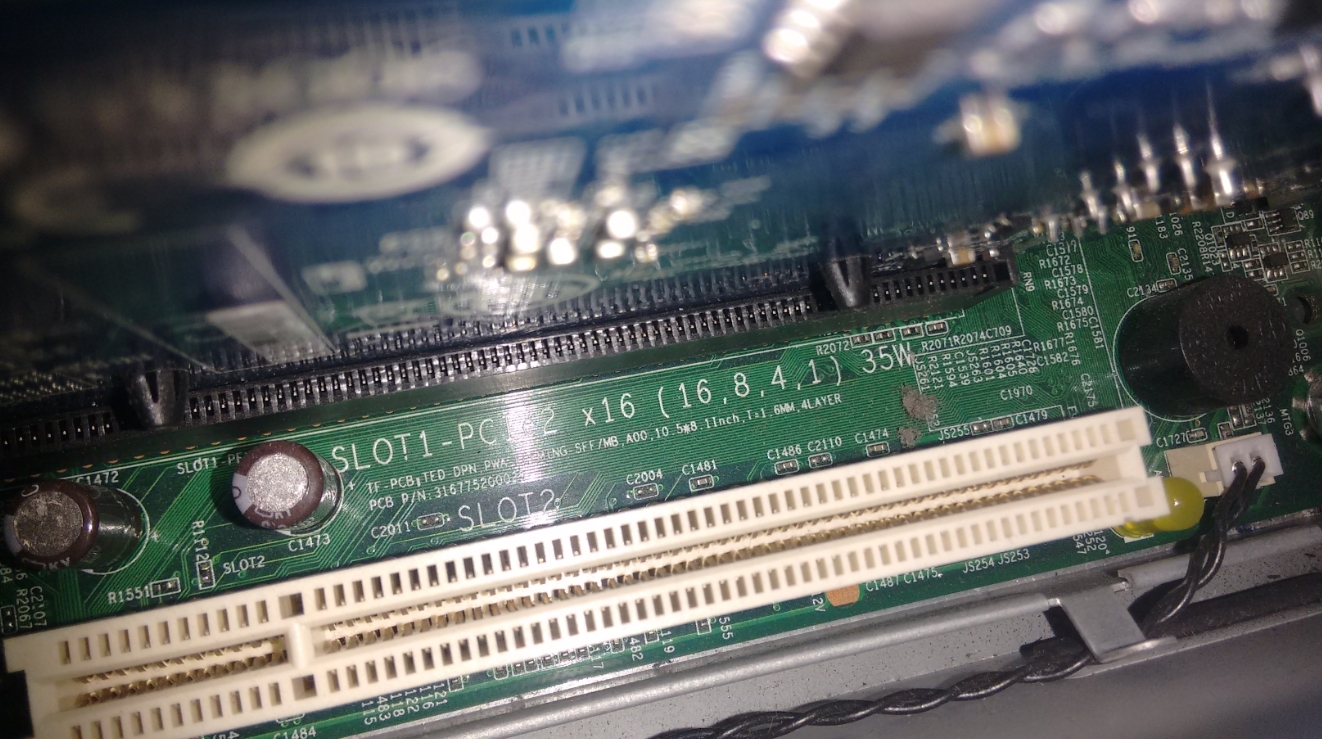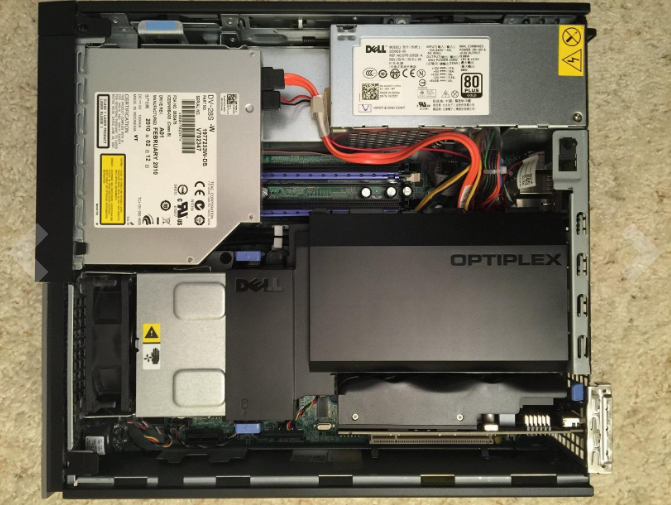scuzzycard :
That limitation should not be exceeeded. This used to be a common restriction on many prebuilts.
I spend last 3 hours of doing research and I found this review on a MSI GTX 750Ti sale on Amazon, the guy talks about how he cut plastic on the heatsink ect to make it fit, I know exactly what he is talking about because after mesauring my PC GPU space, I also concluded that it will not fit and that's why I have looked into a PCIe riser card. This is what the guy said:
"After researching all the available Nvidia GPUs out there, this was the most powerful available in a low-profile short card format that would fit in a Dell SFF. Depending on the space available in your computer, this video card can be made to fit but you may have to modify it and the computer itself.
I have it currently installed Inside a Dell Optiplex 960 but needed to make two small notches in the plastic fan cover and heat sink to clear a capacitor and the Ethernet connector on the motherboard. This required using a Dremel and some trial and error to avoid cutting away more than necessary. In the end it was a perfect fit with less than 1 sq inch of area removed from just one of the dozen horizontal heat sink fins.
The next obstacle was the hard drive caddy which interfered with the video card's fans and cover. Fortunately the SFF I am using is already outfitted with a 2.5" SSD which is light weight and doesn't need the full caddy space for a 3.5" drive. Using the Dremel again, a narrow portion of the caddy was removed along the edge that needed clearance for the video card fans. The old 2.5" to 3.5" adapter was removed and the 2.5" SSD was mounted directly to the caddy with double sided foam tape. Given how light the SSD is, I am not worried about the foam tape losing grip and having the SSD fall on the motherboard.
One concern I often read about and also see mentioned is the required power supply wattage. Reading up on the GTX750Ti design and other GPUs, a majority of power is obtained from the +12V bus. Test reports show this GPU requires 64 watts on average but let's round that up to 72 watts. This only requires 72/12 = 6Amps from the power supply where the Optiplex 960 SFF spec claims 17Amps maximum on the +12V bus. Given the SSD is not power hungry with +12V, there is likely ample margin on powering the GTX750Ti even though the SFF power supply is stated as 235W max.
For those of you looking for the most powerful Nvidia GPU in this form factor, I would recommend this MSI N750TI-2GD5TLP graphics card."
He also provided this picture:
and it's excatly the same PC as me, now, the thing is, this is my second Optiplex 960 SFF, last one was tired as I used it for everything and dicided to get a new PC overall because it's cheaper to buy a whole PC that the moatherboard itself and I don't remeber having the 35W sign on it, so I'm not sure if it was only on selected PC's but after doing even more research, I couden't find 2 diffrent versions of BIOS it would require to create this limit.





